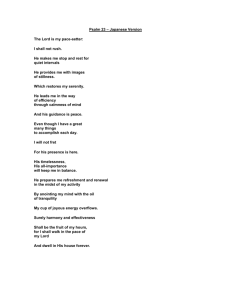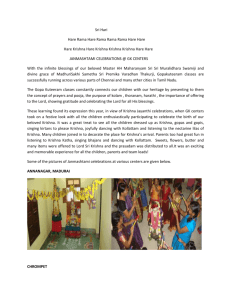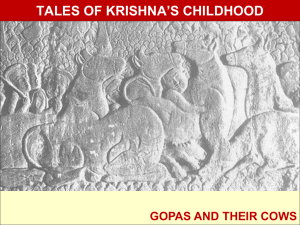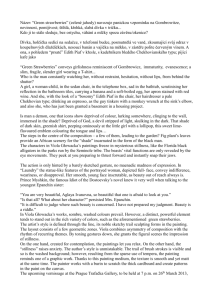The Magic of Imperceptible Transformation
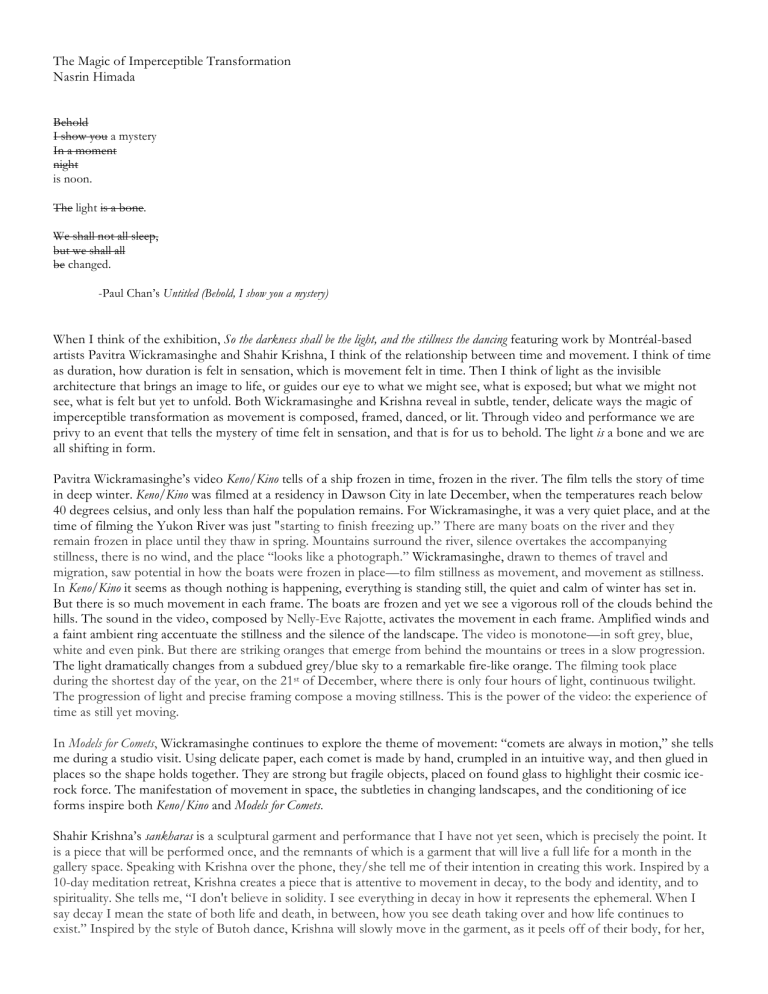
The Magic of Imperceptible Transformation
Nasrin Himada
Behold
I show you a mystery
In a moment night is noon.
The light is a bone.
We shall not all sleep,
but we shall all be changed.
-Paul Chan’s Untitled (Behold, I show you a mystery)
When I think of the exhibition, So the darkness shall be the light, and the stillness the dancing featuring work by Montréal-based artists Pavitra Wickramasinghe and Shahir Krishna, I think of the relationship between time and movement. I think of time as duration, how duration is felt in sensation, which is movement felt in time. Then I think of light as the invisible architecture that brings an image to life, or guides our eye to what we might see, what is exposed; but what we might not see, what is felt but yet to unfold. Both Wickramasinghe and Krishna reveal in subtle, tender, delicate ways the magic of imperceptible transformation as movement is composed, framed, danced, or lit. Through video and performance we are privy to an event that tells the mystery of time felt in sensation, and that is for us to behold. The light is a bone and we are all shifting in form.
Pavitra Wickramasinghe’s video Keno/Kino tells of a ship frozen in time, frozen in the river. The film tells the story of time in deep winter. Keno/Kino was filmed at a residency in Dawson City in late December, when the temperatures reach below
40 degrees celsius, and only less than half the population remains. For Wickramasinghe, it was a very quiet place, and at the time of filming the Yukon River was just "starting to finish freezing up.” There are many boats on the river and they remain frozen in place until they thaw in spring. Mountains surround the river, silence overtakes the accompanying stillness, there is no wind, and the place “looks like a photograph.” Wickramasinghe, drawn to themes of travel and migration, saw potential in how the boats were frozen in place—to film stillness as movement, and movement as stillness.
In Keno/Kino it seems as though nothing is happening, everything is standing still, the quiet and calm of winter has set in.
But there is so much movement in each frame. The boats are frozen and yet we see a vigorous roll of the clouds behind the hills. The sound in the video, composed by Nelly-Eve Rajotte, activates the movement in each frame. Amplified winds and a faint ambient ring accentuate the stillness and the silence of the landscape. The video is monotone—in soft grey, blue, white and even pink. But there are striking oranges that emerge from behind the mountains or trees in a slow progression.
The light dramatically changes from a subdued grey/blue sky to a remarkable fire-like orange. The filming took place during the shortest day of the year, on the 21 st of December, where there is only four hours of light, continuous twilight.
The progression of light and precise framing compose a moving stillness. This is the power of the video: the experience of time as still yet moving.
In Models for Comets , Wickramasinghe continues to explore the theme of movement: “comets are always in motion,” she tells me during a studio visit. Using delicate paper, each comet is made by hand, crumpled in an intuitive way, and then glued in places so the shape holds together. They are strong but fragile objects, placed on found glass to highlight their cosmic icerock force. The manifestation of movement in space, the subtleties in changing landscapes, and the conditioning of ice forms inspire both Keno/Kino and Models for Comets .
Shahir Krishna’s sankharas is a sculptural garment and performance that I have not yet seen, which is precisely the point. It is a piece that will be performed once, and the remnants of which is a garment that will live a full life for a month in the gallery space. Speaking with Krishna over the phone, they/she tell me of their intention in creating this work. Inspired by a
10-day meditation retreat, Krishna creates a piece that is attentive to movement in decay, to the body and identity, and to spirituality. She tells me, “I don't believe in solidity. I see everything in decay in how it represents the ephemeral. When I say decay I mean the state of both life and death, in between, how you see death taking over and how life continues to exist.” Inspired by the style of Butoh dance, Krishna will slowly move in the garment, as it peels off of their body, for her,
clothing in this way represents the decay of self and identity. For Krishna, decay and spirituality are connected on this level of composition and decomposition: “Spirituality is to have this capability to observe life for more than what is in front of us,” they tell me, “that divine power is the most humbling thing if understood with truth and integrity, and not for the ego, but for the dissipation of the ego.” Krishna creates work that is of the body, spirituality and movement. Their work is not disconnected from their process, as it changes, evolves, and develops in new directions. This specifically stems from how they question and challenge themselves as a practitioner, their art practice is connected to how they live their life, in how they develop a way of being in the world, and in how they want to take care of themselves. sankharas is a performance/sculpture that takes this to heart. Making art is about life and living, it’s not for the sake of the art object.
Hence, decay: transformation in movement.
So the darkness shall be the light, and the stillness the dancing is an exhibit that tackles the themes of ephemeral instances, transformation, and other worldly forms—cosmic, spiritual and celestial. The works presented gently nudge the audience to see beyond what we are seeing, and to surrender to the constituted time of quiet and slow. They ask us to open up to new explorations in movement as modes of transformation. They ground us in the intricate formations of light and dance, and encourage us to be attentive to what we do not yet feel or know.
Nasrin Himada is a Palestinian writer, editor, and curator residing in Montréal. Her interdisciplinary research interests focus on the history of Palestinian cinema, art and activism, and the militarization of urban space through prison infrastructure and police surveillance. She currently holds a FQRSC postdoctoral fellowship in the Department of
Communication at Université de Montréal.
